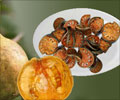Certain preparations taken to enhance athletic performance or stave off disease contain an antioxidant that could cause harm. According to new research at the University of Virginia Health System, N-acetylcysteine (NAC), an antioxidant commonly used in nutritional and body-building supplements, can form a red blood cell-derived molecule that makes blood vessels think they are not getting enough oxygen. This leads to pulmonary arterial hypertension (PAH), a serious condition characterized by high blood pressure in the arteries that carry blood to the lungs. The results appear in the September issue of the Journal of Clinical Investigation.
“NAC fools the body into thinking that it has an oxygen shortage,” said Dr. Ben Gaston, UVa Children’s Hospital pediatrician and researcher who led the study. “We found that an NAC product formed by red blood cells, know as a nitrosothiol, bypasses the normal regulation of oxygen sensing. It tells the arteries in the lung to ‘remodel’; they become narrow, increasing the blood pressure in the lungs and causing the right side of the heart to swell.”Gaston notes that this is an entirely new understanding of the way oxygen is sensed by the body. The body responds to nitrosothiols, which are made when a decreased amount of oxygen is being carried by red blood cells; the response is not to the amount of oxygen dissolved in blood. He says that this pathway was designed much more elegantly than anyone had previously imagined. “We were really surprised”, he said.
The research team administered both NAC and nitrosothiols to mice for three weeks. The NAC was converted by red blood cells into the nitrosothiol, S-nitroso-N-acetylcysteine (SNOAC). The normal mice that received NAC and SNOAC developed PAH. Mice missing an enzyme known as endothelial nitric oxide synthase did not convert NAC to SNOAC, and were protected from the adverse effects of NAC, but not SNOAC. This suggests that NAC must be converted to SNOAC to cause PAH.
Could regular use of NAC produce the same effects in humans? The next step is to determine a threshold past which antioxidant use becomes detrimental to heart or lung function, according to Dr. Lisa Palmer, co-researcher of the study.
“The more we understand about complexities in humans, the more we need to be aware of chemical reactions in the body,” said Palmer.
According to Gaston and Palmer, NAC is being tested in clinical trials for patients with cystic fibrosis as well as other conditions; and clinical trials with nitrosothiols are being planned. These results, Palmer says, should motivate researchers to check their patients for PAH.
“From here we could devise new ways for sensing hypoxia or we could in theory modify signaling to treat PAH,” Palmer said.
Source-Newswise
SRM/J











